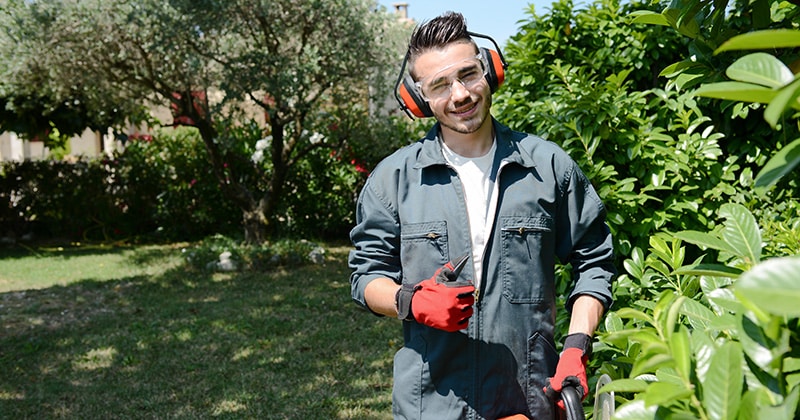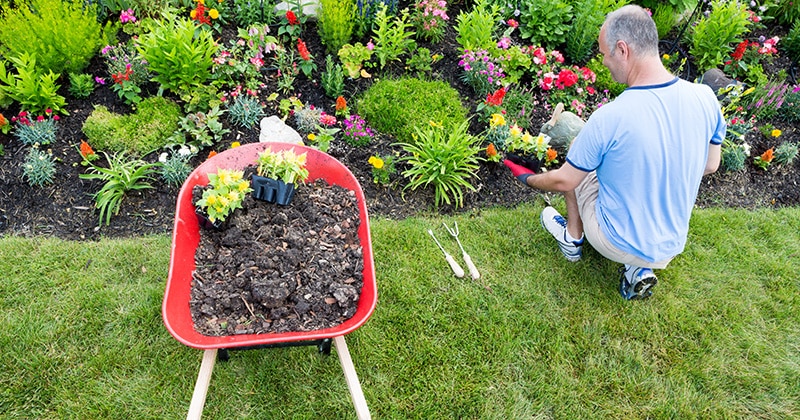The $7.1 billion landscape design industry in the US is competitive. So, if you’re interested in becoming an expert landscape designer, you’ll need to work to stand out.
In this article, we’ll cover the basics of landscape design and how to gain hands-on experience. Then, we’ll discuss the importance of building a portfolio and joining a professional organization. By following these steps, you’ll be well on your way to developing the skills and knowledge you need to succeed in this rewarding field.
So, let’s dive in!
Learn Landscape Design Basics

If you want to become a pro in landscape architecture, it’s best to start with the basics. Familiarizing yourself with core design principles and practical techniques will equip you with the skills you need. From there, you can create beautiful, functional outdoor spaces that meet your clients’ needs.
Here are some tips to help you get started:
- Take a course. One of the best ways to learn the basics of landscape design is to take a course. There are many options available, both online and in-person. Look for an option that fits your schedule and caters to your learning preferences. Ensure it covers the fundamentals of landscape design. Topics including plant selection, hardscaping, and computer-aided design are all important.
- Read books. Another great way to learn about landscape design is to read books on the subject. A quick search will uncover a treasure trove of landscaping expertise. This offers expert advice on everything from design 101 to specialty plant care. Choose a few books that resonate with you and cover the topics you’re interested in.
- Observe nature. No one does it better than Mother Nature herself. The natural environment is an excellent teacher. So, take the time to observe the outdoor spaces around you. Visit parks and gardens. Note how plants are arranged. See how elements and materials are combined and contrasted for effect. This will give you a better understanding of what works well and what doesn’t.
- Practice. Practice is crucial if you want to become an expert landscape designer. Start by sketching out your ideas on paper or using landscaping software. Experiment with different plant pairings and various hardscaping materials. The more you practice, the better you’ll get.
RELATED ARTICLE: 5 Landscape Design Must-Dos You Should Brush Up On
Gain Hands-On Experience

To become a landscape designer, you’ll need to put in a lot of hard work and dedication. One of the most important things you can do to become an expert is to gain hands-on experience. This means getting out there and working with plants, trees, and soil.
Why is hands-on experience so important? Well, there are many things you can only learn by doing. For example, you might read about how to plant a tree. But until you do it yourself, you won’t fully understand the process. Hands-on experience allows you to learn from your mistakes and figure out what works best for you.
So, how can you gain hands-on experience? There are a few different ways:
- Internships. Look for internships with local landscaping companies or design firms. This will allow you to work with professionals in the field and learn from their expertise.
- Apprenticeships. Consider an apprenticeship with a professional landscaper or designer. This will give you the chance to work alongside someone with years of experience.
- Volunteer work. Many community gardens or parks rely on volunteers. They help with planting and maintenance. Volunteering is a great way to get hands-on experience and give back to your community.
Here are some actionable tips for acquiring hands-on experience:
- Start small. If you’re new to landscaping, start with a small project. For example, plant flowers or vegetables in your backyard. This will help you build your skills and confidence.
- Take classes. Look for classes or workshops that focus on landscaping or gardening. These can be a great way to learn new techniques and connect with others interested in the same things.
- Attend events. Check out local garden shows or landscaping events. These can be a great way to see what’s new in the industry. You can also meet other people passionate about landscaping.
Remember, garden design is an art that takes time and practice to master. But with dedication and discipline, you can gain the skills and knowledge you need to succeed. Then, you can earn the average landscape designer salary ($64,732 per year) and beyond.
RELATED ARTICLE: Challenges of Learning 3D Landscape Design Software
Build a Portfolio

If you’re looking to become an expert landscape designer, one thing you’ll definitely want to do is build a portfolio.
A portfolio is a collection of your best work that showcases your skills and expertise. It’s a great way to show potential clients or employers what you’re capable of and how you can help them.
Before someone hires landscape designers, they want to see what you’ve done before. That’s why creating a portfolio is key to your success. They want to see examples of your work to make sure that you can deliver the results they’re looking for.
A portfolio shows you have experience. It also demonstrates your ability to create beautiful and functional outdoor spaces.
What should you include in a landscape design portfolio? Here are a few things to consider:
- Photos of completed projects. Include pictures of your best work. Highlight different styles and types of projects you’ve worked on. Make sure to choose high-quality images that showcase your attention to detail.
- Before and after photos. People love to see the transformation that can happen with landscaping. Including before and after photos of your projects can be a great way to showcase your skills.
- Design plans. If you’ve created detailed design plans for your projects, include them in your portfolio. This can help potential clients or employers see your process and design skills.
- Testimonials. Include positive feedback from clients or employers in your portfolio. This can help build trust and show you’re a reliable and skilled designer.
- How do you create a portfolio? Here are some tips to get you started:
- Start with your best work. Choose the projects you’re most proud of. Use those as the foundation for your portfolio.
- Organize your work. Organize your portfolio. Group similar projects and ensure a good flow.
- Keep it simple. Don’t overcrowd your portfolio with too much information. Keep it clean and easy to navigate.
- Update regularly. Keep your portfolio up to date with your latest work. This shows that you’re actively working in the field and continuing to grow your skills.
Join Professional Organizations

Most landscape designers understand it takes more than knowledge to design outdoor spaces. It also requires connections and ongoing education. That’s where professional organizations come in.
Joining a professional organization can help you stay up to date on industry trends. It can help you connect with other professionals in your field too.
Here are a few reasons you should join an organization:
- Networking. Professional organizations provide a great opportunity to network with other professionals. This can lead to job opportunities, partnerships, and collaborations.
- Education. Many professional organizations offer training, workshops, and other educational resources. This helps you stay up to date on the latest trends and techniques.
- Access to resources. Professional organizations often have access to resources that can help you in your career. This includes job boards, mentorship programs, and certification programs.
There are a few different professional organizations that are relevant to landscape design. Here’s an overview of a few of the most popular:
- The Association of Professional Landscape Designers (APLD) is an international organization that represents professional landscape designers. They offer certification programs, webinars, and networking opportunities.
- The American Society of Landscape Architects (ASLA) is a professional organization for landscape architects. They offer continuing education opportunities, advocacy work, and a job board.
- The National Association of Landscape Professionals (NALP) is a professional organization for landscape professionals, including designers, contractors, and maintenance workers. They offer educational resources, advocacy work, and networking opportunities.
What are the benefits of joining a professional organization?
- Access to a community of professionals in your field
- Opportunities for ongoing education and training
- Access to landscape designer jobs and other resources
- Advocacy work that benefits your industry
Joining a professional organization is a great way to take your landscape design career to the next level. It can help you stay current on industry trends. You can also form relationships with other professionals and access valuable resources.
RELATED ARTICLE: How to Market and Grow Your Landscape Business
Take the First Step Today

Being a successful landscape designer is a rewarding career path. It allows you to unleash your creativity and make a positive impact on the world. Ready to take the first step? Here are some actionable tips you can do right now:
- Research and apply for landscaping design courses.
- Research and buy landscaping design books. Set aside time to read them every day.
- Find local landscaping businesses that align with your goals. Reach out and ask them if they need an apprentice.
- Plan a landscaping project for your property or a friend or family member. Take photos and document the process.
- Collate images of past landscaping work you’ve done. Get started on your portfolio.
- Join professional organizations. Flag upcoming events you could attend.
- You can become an expert landscape designer. And you can create beautiful, sustainable outdoor spaces. Your clients will love them for years to come.